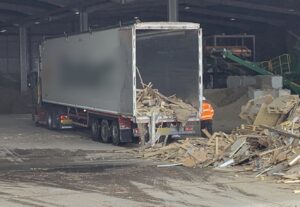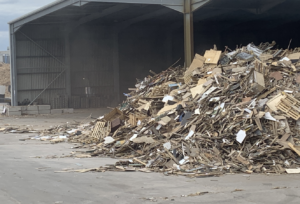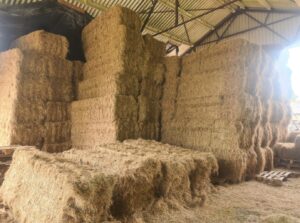Recycling company fined after workers exposed to wood dust
The long-term health of workers at a wood waste recycling centre was put in danger due to excessive exposure to the dust their work created, a Health and Safety Executive (HSE) prosecution has found.
Esken Renewables Limited, a waste and recycling company that specialises in generating biofuel from renewable waste, ran a wood waste recycling centre in Middlesborough that processed mixed wood waste, hardwood and softwood into biofuel.
Breathing in wood dust excessively can cause asthma and nasal cancer. In particular, dust from softwood wood dust is a known asthmagen while particles from hardwood are a known carcinogen.
A HSE inspector visited the site in April 2022 to investigate the dust exposures on the site. A few weeks earlier, concerns had been raised about wood dust spreading to the surrounding area. The inspector wrote in detail to Esken Renewables with evidence demonstrating the extent of the wood dust exposure to staff, so that the right action could be taken by the company to control the risks.

The company provided a detailed response, and it was accepted that exposures to the surrounding area was in large part due to four storms in quick succession.
However, the HSE investigation found that the control of wood dust to protect employees working on and around the site was not adequate and fell short of the expected benchmark.
The company failed to design and operate processes and activities to minimise emission, release and spread of wood dust. One solution would be through the use of local exhaust ventilation, the enclosure of machinery or the designing of the processes such as using vacuum systems as opposed to compressed air for cleaning and maintenance.

Guidance on working in the woodworking industry is available and an inspection-led campaign to protect workers continues.
Esken Renewables Limited, who operated the site at Port Clarence Road, Port Clarence, Middlesbrough, pleaded guilty of breaching Regulation 7(1) of the Control of Substances Hazardous to Health (COSHH) Regulations 2002 and were fined £160,000 and ordered to pay £5,310.35 in costs at Teesside Magistrates’ Court on 23 May 2024.
Speaking after the hearing, HSE inspector Matthew Dundas said: “The expected standard is to control exposure to as low a level as is reasonably practicable.
“We hope this serves to raise industry awareness for the expectation of control of hazardous substances, namely wood dust, in the wood waste and recycling industry.”
This prosecution was brought by HSE enforcement lawyer Iain Jordan and supported by HSE paralegal officer Rebecca Forman.
Notes to editors
- The Health and Safety Executive (HSE) is Britain’s national regulator for workplace health and safety. It aims to reduce work-related death, injury and ill health. It does so through research, information and advice, promoting training; new or revised regulations and codes of practice, and working with local authority partners by inspection, investigation and enforcement. www.hse.gov.uk
- More about the legislation referred to in this case can be found at: https://www.hse.gov.uk/woodworking/recycling.htm
- HSE news releases are available at http://press.hse.gov.uk





